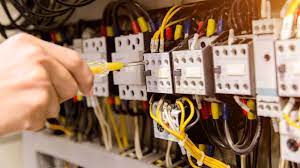All you need to test electrical household things is a low-cost continuity tester or a multimeter available at hardware stores. You can buy a continuity tester for less than $5.00. A multimeter (under $20) measures the amount of power (voltage) being applied, electricity (current) being used, and how much resistance it needs to overcome to do the job. Power is measured in volts (V), the current is counted in amperes or amps (A), and resistance is calculated in ohms (O).
There’s one more electrical term you’ve probably heard. Defining it will come in handy as you fix electrical devices. A watt is the amount of power consumed by an electrical device when it is running. A 750-watt toaster, for example, uses 750W (watts) of power when toasting your wheat, rye, sourdough, or other bread in the morning.
Continuity Tester
Electricity needs a continuous path or circuit in order to flow. It’s like a two-lane road from point A to point B and back. If one or both lanes are blocked, traffic–in this case, electricity–stops. A continuity tester is useful for checking cords and wires to make sure they can conduct electricity.
To use a continuity tester, follow these steps:
1. Disconnect the cord from the power source (electrical receptacle).
2. Make sure any switches on the device are on.
3. Place the continuity tester’s clip on one prong of the cord.
4. Touch the tip of the continuity tester to the other prong. If there is continuity, the tester will light up. If not, it won’t.
Here’s what happens: The continuity tester sends electricity from an internal battery through one cord prong and down the wires. If the light gets electrical current from the other prong it lights up, meaning that the path is good. Otherwise, something is stopping it. Remove the cord from the appliance and test each of the two wires separately to see which one doesn’t work. If both work, the short is in the appliance itself.
Multimeter
A multimeter (also called a volt-ohmmeter or VOM) is another way of testing continuity. Use it to measure the amount of alternating current (AC or household current) or direct current (DC or battery current) in a plugged-in or live circuit. It can check voltage, too. For example, a multimeter can verify that there are about 120 volts in an AC circuit or that a 9-volt battery is fully charged. In addition, a multimeter can check resistance. A continuity tester checks resistance, but answers yes or no. A multimeter checks resistance and reports how many ohms (the measurement of resistance) a circuit carries.
You can use a multimeter to test motors, switches, controllers, and many other electrical gadgets. Refer to the multimeter’s instruction sheet for specifics.
Here’s how to use a multimeter to test an electric appliance:
1. Disconnect the cord from the power source, except when testing a live circuit.
2. Plug the test leads into the multimeter.
3. Select the function (ACV, DVC, resistance) and the range (maximum reading expected).
4. Connect the probes to the cord or appliance component.
5. Interpret the reading. Refer to the product manual for tips on what may be wrong and what you can do about it. In addition, there are numerous resources online.
Don’t let a simple electrical problem keep you from using the power of electricity. A couple of simple electrical tests can help you in fixing household things that break — instead of tossing them.


